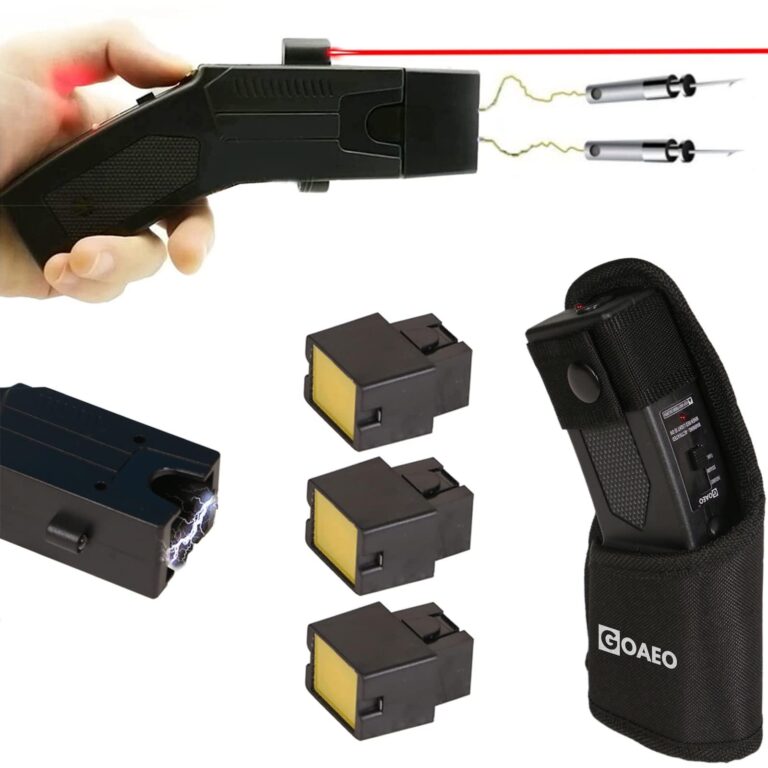Table of Contents
- Stun Gun and Firearm Concealed Carry Permits Explained
- Legal Requirements and Application Processes Compared
- Practical Considerations for Choosing Between Stun Guns and Firearms
- Safety Tips and Responsible Carry Recommendations
- Future Outlook
Stun Gun and Firearm Concealed Carry Permits Explained
Obtaining a concealed carry permit for a stun gun versus a firearm involves distinct legal frameworks and procedural requirements. Stun gun permits are often less regulated in many states, reflecting their classification as less lethal self-defense tools. Typically, these permits require minimal background checks and may not demand training or firearm safety courses. In contrast, firearm concealed carry permits demand more stringent processes, including comprehensive background checks, fingerprinting, and mandatory completion of certified safety classes. This reflects the higher risk and responsibility associated with carrying a firearm in public spaces.
When navigating the permit application, it’s crucial to recognize the differences in permissible locations, legal restrictions, and renewal policies for each type of permit. For example, firearm permits often have stricter limitations about carrying in schools, government buildings, and private property with explicit prohibitions. Conversely, carrying a stun gun may be permissible in more places but still subject to local laws. Applicants should also be aware that firearm permits typically have expiration dates requiring periodic renewal, whereas stun gun permits, where required, might have different validity periods or none at all. Understanding these distinctions ensures responsible, lawful self-defense choices tailored to individual needs.
Legal Requirements and Application Processes Compared
When considering the legal landscape for carrying a stun gun versus a firearm, the complexities are notably different. Stun guns generally fall under less stringent regulations, with many states allowing possession without a permit. However, some jurisdictions impose restrictions on their carry, especially in sensitive locations like schools or government buildings. In contrast, firearm concealed carry demands a more rigorous legal framework, typically involving background checks, fingerprinting, and mandatory firearm training courses. This disparity highlights how lawmakers prioritize firearms differently due to their potential lethality compared to non-lethal electric weapons.
Application processes differ substantially between the two, often reflecting the level of scrutiny applied. For stun guns, the application process-if required-is usually straightforward, involving minimal paperwork and lower fees. Firearm permits, on the other hand, are characterized by:
- Comprehensive background examinations to assess criminal history and mental health records
- Mandatory safety and shooting proficiency courses to ensure responsible handling
- Extended waiting periods during which applications are reviewed by local authorities
Additionally, renewals for firearm permits often demand continued compliance with safety standards, while stun gun regulations tend to be less dynamic. Understanding these distinctions is crucial for anyone weighing their options for personal defense within legal bounds.
Practical Considerations for Choosing Between Stun Guns and Firearms
When deciding between carrying a stun gun or a firearm, it’s important to weigh factors such as legal restrictions, ease of use, and safety. Firearms often require rigorous background checks, training courses, and permits, whereas stun guns tend to have fewer regulatory hurdles, making them a more accessible option in many areas. Additionally, stun guns provide a non-lethal means of self-defense, which can significantly reduce the risk of fatal outcomes in high-stress confrontations. However, their effective range is extremely limited, necessitating close physical proximity to a threat.
Another vital consideration is the practical aspect of concealment and readiness. Firearms, while powerful, can be bulkier and require secure holsters and careful positioning to avoid accidental discharge or detection. Stun guns are typically compact, lightweight, and less intimidating in appearance, making them ideal for discreet carry. However, they demand an individual to be within arm’s reach of an aggressor, which can compromise personal safety in some scenarios. Ultimately, evaluating your environment, personal comfort, and the potential threats you face will guide which tool aligns best with your concealed carry needs.
Safety Tips and Responsible Carry Recommendations
When carrying a stun gun or firearm, prioritizing safety is paramount. Always ensure that your device is stored securely yet accessed quickly in case of emergency. For stun guns, this means engaging the safety switch when not in use and avoiding accidental activation. Firearms require even more meticulous care – including regular maintenance, safe holstering, and proficiency through consistent training. Remember, knowledge of your device’s operation, combined with regular practice, significantly reduces the risk of accidental discharge or injury.
Responsible carry also extends to being aware of your surroundings and respecting local laws and regulations. Avoid carrying in prohibited areas and understand that concealment is not just about hiding your weapon but also about minimizing public alarm. To maintain a responsible approach, keep in mind:
- Never handle your weapon under the influence of alcohol or drugs.
- Communicate your intentions clearly if you must disclose your carry to law enforcement.
- Regularly update yourself on local statutes regarding stun guns and firearms.
Future Outlook
In the ongoing conversation about personal safety and self-defense, understanding the distinctions between stun gun and firearm concealed carry permits is crucial. Each option comes with its own set of legal requirements, practical considerations, and responsibilities. Whether you choose a stun gun or a firearm, the key is to stay informed, comply with local laws, and prioritize safety above all. Ultimately, the best choice is the one that aligns with your comfort level, needs, and commitment to responsible carry. Stay safe and empowered on your personal security journey.Check Our Other Blogs
- StunGun – Your Trusted Source for Stun Guns, Laws, and Self-Defense Tips
- PepperSprayLaws – Your Trusted Resource for Pepper Spray Information
- StunGunLaws – Your Trusted Guide to Stun Gun Legality and Safety





